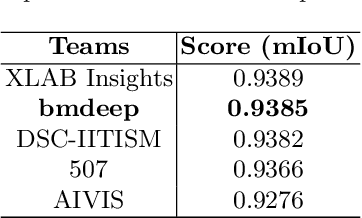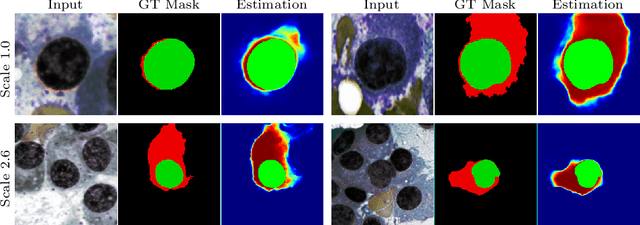Alaa Sulaiman
Enhancing Efficiency in Vision Transformer Networks: Design Techniques and Insights
Mar 28, 2024



Abstract:Intrigued by the inherent ability of the human visual system to identify salient regions in complex scenes, attention mechanisms have been seamlessly integrated into various Computer Vision (CV) tasks. Building upon this paradigm, Vision Transformer (ViT) networks exploit attention mechanisms for improved efficiency. This review navigates the landscape of redesigned attention mechanisms within ViTs, aiming to enhance their performance. This paper provides a comprehensive exploration of techniques and insights for designing attention mechanisms, systematically reviewing recent literature in the field of CV. This survey begins with an introduction to the theoretical foundations and fundamental concepts underlying attention mechanisms. We then present a systematic taxonomy of various attention mechanisms within ViTs, employing redesigned approaches. A multi-perspective categorization is proposed based on their application, objectives, and the type of attention applied. The analysis includes an exploration of the novelty, strengths, weaknesses, and an in-depth evaluation of the different proposed strategies. This culminates in the development of taxonomies that highlight key properties and contributions. Finally, we gather the reviewed studies along with their available open-source implementations at our \href{https://github.com/mindflow-institue/Awesome-Attention-Mechanism-in-Medical-Imaging}{GitHub}\footnote{\url{https://github.com/xmindflow/Awesome-Attention-Mechanism-in-Medical-Imaging}}. We aim to regularly update it with the most recent relevant papers.
Credit card score prediction using machine learning models: A new dataset
Oct 15, 2023



Abstract:The use of credit cards has recently increased, creating an essential need for credit card assessment methods to minimize potential risks. This study investigates the utilization of machine learning (ML) models for credit card default prediction system. The main goal here is to investigate the best-performing ML model for new proposed credit card scoring dataset. This new dataset includes credit card transaction histories and customer profiles, is proposed and tested using a variety of machine learning algorithms, including logistic regression, decision trees, random forests, multi-layer perceptron (MLP) neural network, XGBoost, and LightGBM. To prepare the data for machine learning models, we perform data pre-processing, feature extraction, feature selection, and data balancing techniques. Experimental results demonstrate that MLP outperforms logistic regression, decision trees, random forests, LightGBM, and XGBoost in terms of predictive performance in true positive rate, achieving an impressive area under the curve (AUC) of 86.7% and an accuracy rate of 91.6%, with a recall rate exceeding 80%. These results indicate the superiority of MLP in predicting the default customers and assessing the potential risks. Furthermore, they help banks and other financial institutions in predicting loan defaults at an earlier stage.
Unlocking Fine-Grained Details with Wavelet-based High-Frequency Enhancement in Transformers
Sep 12, 2023Abstract:Medical image segmentation is a critical task that plays a vital role in diagnosis, treatment planning, and disease monitoring. Accurate segmentation of anatomical structures and abnormalities from medical images can aid in the early detection and treatment of various diseases. In this paper, we address the local feature deficiency of the Transformer model by carefully re-designing the self-attention map to produce accurate dense prediction in medical images. To this end, we first apply the wavelet transformation to decompose the input feature map into low-frequency (LF) and high-frequency (HF) subbands. The LF segment is associated with coarse-grained features while the HF components preserve fine-grained features such as texture and edge information. Next, we reformulate the self-attention operation using the efficient Transformer to perform both spatial and context attention on top of the frequency representation. Furthermore, to intensify the importance of the boundary information, we impose an additional attention map by creating a Gaussian pyramid on top of the HF components. Moreover, we propose a multi-scale context enhancement block within skip connections to adaptively model inter-scale dependencies to overcome the semantic gap among stages of the encoder and decoder modules. Throughout comprehensive experiments, we demonstrate the effectiveness of our strategy on multi-organ and skin lesion segmentation benchmarks. The implementation code will be available upon acceptance. \href{https://github.com/mindflow-institue/WaveFormer}{GitHub}.
* Accepted in MICCAI 2023 workshop MLMI
Multi-scale Regional Attention Deeplab3+: Multiple Myeloma Plasma Cells Segmentation in Microscopic Images
May 13, 2021



Abstract:Multiple myeloma cancer is a type of blood cancer that happens when the growth of abnormal plasma cells becomes out of control in the bone marrow. There are various ways to diagnose multiple myeloma in bone marrow such as complete blood count test (CBC) or counting myeloma plasma cell in aspirate slide images using manual visualization or through image processing technique. In this work, an automatic deep learning method for the detection and segmentation of multiple myeloma plasma cell have been explored. To this end, a two-stage deep learning method is designed. In the first stage, the nucleus detection network is utilized to extract each instance of a cell of interest. The extracted instance is then fed to the multi-scale function to generate a multi-scale representation. The objective of the multi-scale function is to capture the shape variation and reduce the effect of object scale on the cytoplasm segmentation network. The generated scales are then fed into a pyramid of cytoplasm networks to learn the segmentation map in various scales. On top of the cytoplasm segmentation network, we included a scale aggregation function to refine and generate a final prediction. The proposed approach has been evaluated on the SegPC2021 grand-challenge and ranked second on the final test phase among all teams.
 Add to Chrome
Add to Chrome Add to Firefox
Add to Firefox Add to Edge
Add to Edge